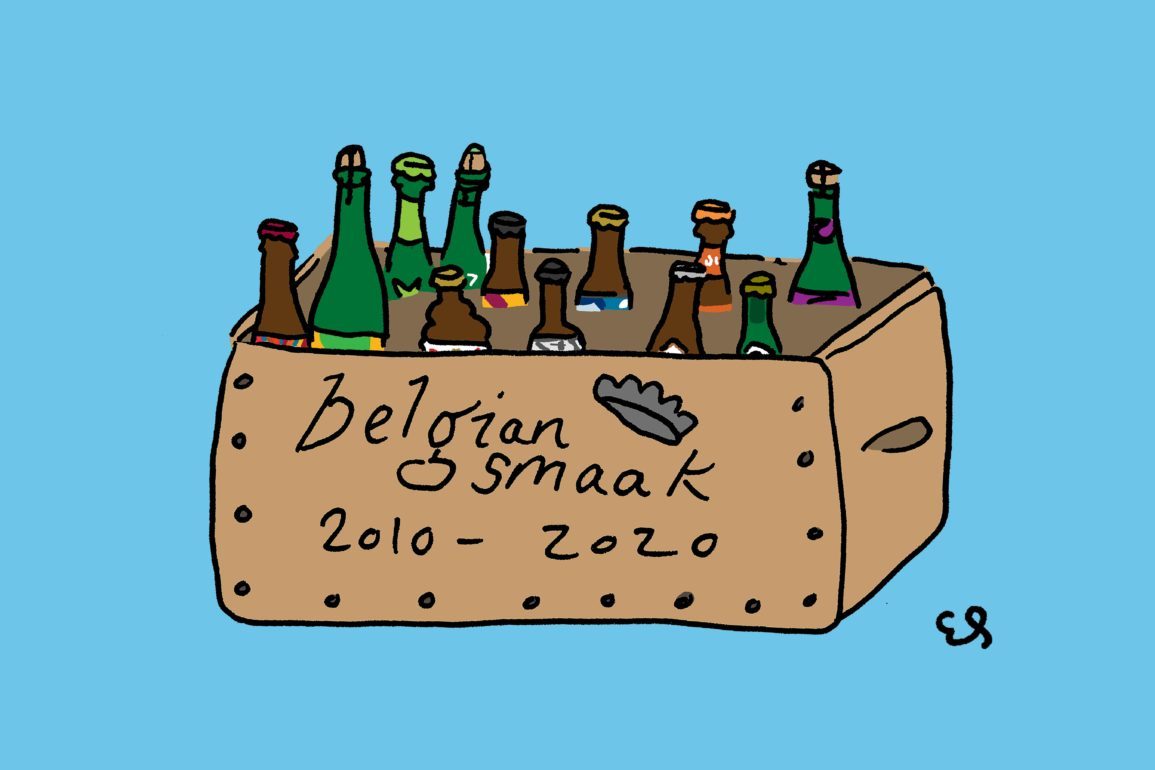Words by Breandán Kearney
Illustrations by Em Sauter
Edited by Eoghan Walsh
The Belgian beer scene is notoriously slow-moving, often regarded as doggedly attached to tradition and staunchly resistant to change. In a way, the Belgian beers that defined the last decade are the same beers that have defined every decade since they were first created: Rodenbach from 1821. Saison Vieille Provision Dupont from 1920. Orval from 1932. Westmalle Tripel from 1956. The list continues: De Dolle’s Oerbier (1980); De Ranke’s XX Bitter (1996); and De La Senne’s Zinnebier (2002).
In the last ten years, Belgium continued to furrow its own path—self-obsessed, or maybe self-aware. Not many of the big global trends that emerged in “craft” beer materialised, or had much purchase, in Belgium. There were few Black IPAs and even fewer glitter beers, some exploration of Bruts and Hazys on the margins of the scene, but no Seltzers or Slime beers to be seen. The low calorie, low alcohol trend which continues to proliferate in other parts of the world barely made a dent in Belgium, even as some of the country’s larger and more marketing-savvy breweries launched low-ABV beers or alcohol-free versions of their flagships. And while everyone else was going mad for cans, Belgian brewers—despite a handful of exceptions—persisted with refermentation in bottle right up until the end of the decade. Many Belgian breweries still have the same website and beer labels they did in 2010, and online shops only appeared when COVID took hold.
There were, however, some changes which Belgium could not resist. The global trend of consolidation saw several key Belgian players purchased by bigger rivals and foreign concerns. Rodenbach and the Palm group were taken into the Dutch Bavaria family in 2016, now rebranded as Swinckels. The producer of Tripel Karmeliet, Brouwerij Bosteels, was bought by AB Inbev’s “global growth and innovation group” ZX Ventures in the same year. Duvel Moortgat flexed its international muscles, and after buying Belgian breweries Chouffe and De Koninck bought stakes in Boulevard of Missouri in 2014, Firestone Walker of California in 2015, ‘t Ij of Amsterdam in 2015, and Birrificio del Ducato of Parma in 2016.
And as it did in other countries, the number of breweries increased in Belgium. At the beginning of the decade, there were around 150 breweries and less than 100 contract firms. Today, there are in the region of 380 breweries and 270 contract firms. It’s growth, but at a much slower rate than elsewhere, perhaps hampered by less flexible routes to market and more conservative consumers.
The other nuanced changes of Belgian beer in the last ten years are embodied in the list of beers that follows: a renewed engagement by younger brewers with spontaneous and mixed fermentation traditions; an increased willingness to embrace different types of hops, both for bitterness and aromatics; a slide in popularity of brewing Abbey style beers in favour of stronger Golden, Blonde, and Pale Belgian Ales; and if not an openness in the demeanour of brewers, then at least a greater curiosity in different ingredients and process, and a tentative flirtation with the concept of collaboration.
There are a few breweries and beers which could legitimately claim to have been in with a shout of inclusion. The creativity of blending and the possibilities of fruit were lifted to great heights by Raf Souvereyns at Bokke (formerly Méthode Goat and Bokkereyder) as well as by Antidoot, Alvinne, and De Leite. De Brabandere showcased accessible blending for consumers with their Petrus Sours project of 2014. The innovative Vicaris Tripel Gueuze from Dilewijns—a blend of Belgian Tripel and Geuze—missed out on the list on a technicality, existing under a different name pre-2010 (it was launched as Vicardin in 2006 before changing name in 2012).
There were also a spate of brett-conditioned beers that just missed out consideration: Straffe Hendrik Wild from De Halve Maan (2015), Wild Jo from De Koninck (2015), Rebelse Strop from Roman (2016), and, just this month, Vander Ghinste released Omer Brut Nature (2020). Barrel-aging to obtain the character of what was previously in the wood rather than as a fermentation vessel became more common, led most astutely by Dochter van de Korenaar with their oak aged L’Embrace, L’Ensemble, and La Renaissance beers, Struise with their Black Damnation Project, and Het Anker with its Gouden Carolus Whisky Infused (2015).
More drinkable Belgian session beers started to appear in the years following 2010, mostly deploying noble hops. Pils 13 (4% ABV) from the Ministry of Belgian Beer had the dry, earthy profile of a German lager. Simplex (4.5% ABV) from De Ranke displayed the brewery’s characteristic bitter bite. Papy van de Pils (4% ABV) from En Stoemelings showed that new, small, and classically-minded breweries could have a go at pilsner. And virtually all of L’Ermitage’s low ABV hoppy offerings were beautifully on-point.
But, for their own reasons, our contributors just didn’t think they deserved to be on a list of epoch-defining beers.
The beers we have selected did reach that standard: they stood out as diverse and unique and influential. Importantly, these are modern Belgian beers to their core, even as the wider brewing world is increasingly in thrall to its American counterparts.
At the beginning of another decade, and with vaccinations for COVID within reach—making real the prospect of a return to the pub in the near future—now is the perfect time to reflect on where Belgian beer has been in the last decade, and to hopefully look forward to where it’s going in the ten years between now and 2030.
Twelve professional beer writers familiar with Belgian beer took a moment to take stock of the past decade. These are the 12 beers that defined the Belgian beer scene during the last ten years, listed in order of their release date. Revisit those you haven’t enjoyed in a while. Let what follows be a launching pad for discussion about the beers you might have included but are not in this list. Or simply use it as inspiration to muse on what the Belgians might do next.
1. TROUBADOUR MAGMA (The Musketeers)
Belgian Tripel IPA (9% ABV)
Released: 2010
How do you respond to the global craft beer revolution when—funky packaging and obsession with ownership aside—you are already home to many of the greatest craft beer styles and brands in the world? When these beers are exciting and inspiring to young craft brewers abroad, but not at home?
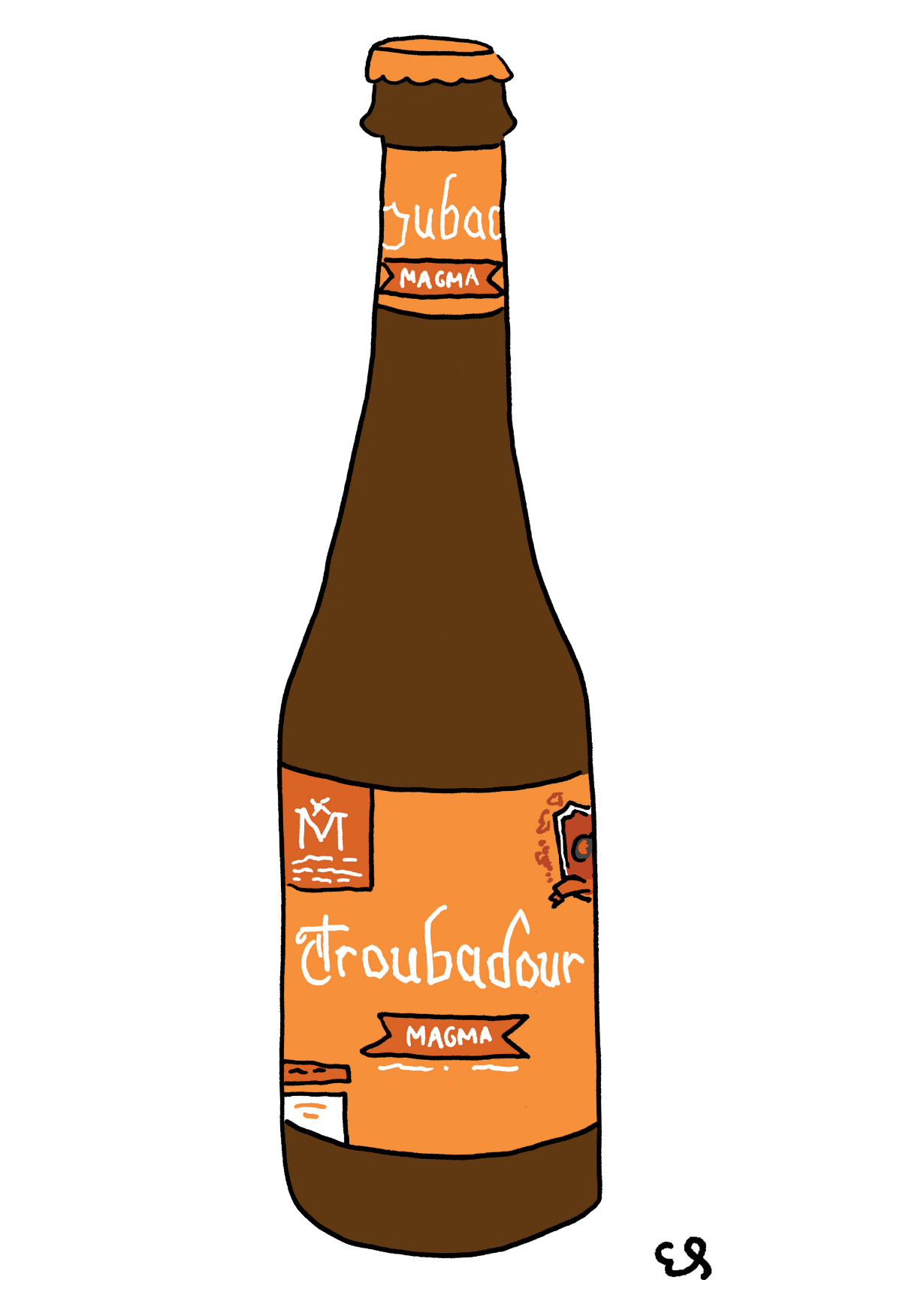
In Belgium in the noughties, the answer was “Belgian IPA”—a hybrid that was often less than the sum of its parts. American hops and Belgian yeast is not necessarily a bad combination, but you’d sometimes be stuck rolling it around your palate, simply wondering, “Why?”
Troubadour Magma, launched by The Musketeers at the 2010 Zythos beer festival, neatly solved the problem. A “Belgian Tripel—India Pale Ale”, it doesn’t taste exactly like a Tripel or an IPA, and it doesn’t taste like the two have been clumsily blended. It simply tastes both Belgian and contemporary craft at the same time.
I was first introduced to the beer in 2016, and simply assumed it was an obscure Belgian classic that had somehow escaped my gaze until that point. I was gobsmacked to learn it had only been around for a few years. This is true craft: a contemporary response that honours tradition.
—Pete Brown
Pete Brown has three times been named British Beer Writer of the Year and three times the winner of Fortnum & Mason Food and Drink Awards. Pete is the Chair of the British Guild of Beer Writers. His latest book—”Beer By Design: The Art of Good Beer Branding”—was released in November 2020.
2. SAINTE-HÉLÈNE SIMCOE LAGER (Sainte-Hélène)
Hoppy Light Lager (3.5% ABV)
Released: 2011
Few will remember now—there are so many more breweries, playing in all sorts of ways less likely to get noticed—but I remember when humble Eddy Pourtois of Sainte-Hélène made a splash with Simcoe Lager: a highly unlikely beer.
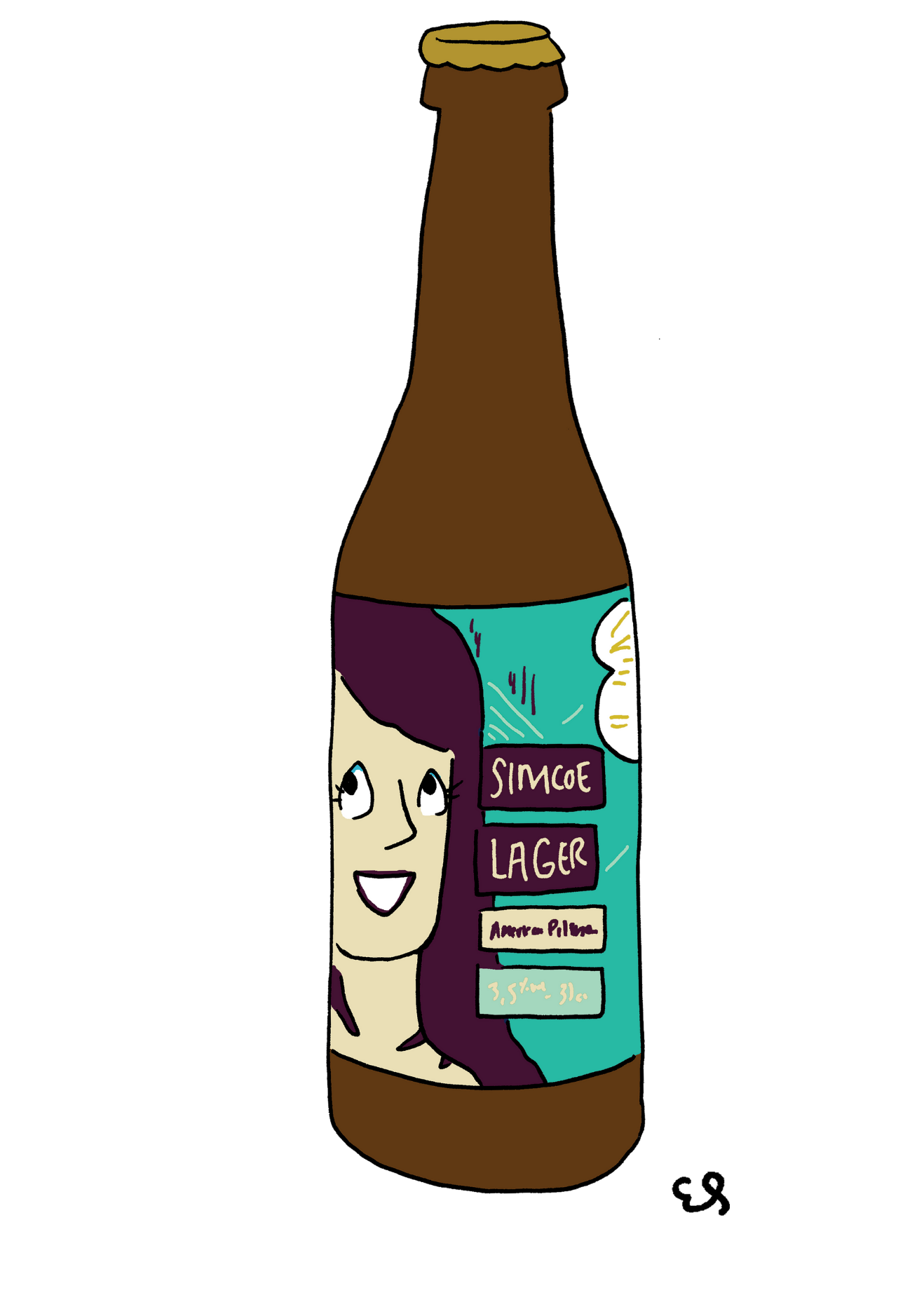
It starts at a small Ardennes festival in July 2011, the Rencontre at Hotton. Then it appears that autumn on draft at Moeder Lambic. That’s enough to attract the notice of the geeks—What? A lager? With Simcoe? At 3.5 percent ABV?—but then its appearance at Zythos in the Spring makes a somewhat wider impression. For a while after that, its main format is 75 cl bottles, which you’re lucky to find fresh in a bottle shop—though it reappears now and then on draft, if you’re even luckier.
Simcoe Lager didn’t need to be a national phenomenon to nudge the next decade of Belgian beer. It didn’t need to be great—though it can be very good, when fresh and in top form, coaxing peachy aroma out of an infamously catty hop. It didn’t need to be consistent (it never really was). All it had to do was reach the right audience—brewers and geeks—to make its case.
The hop was an eyebrow-raiser, but not an important part of the argument. Slightly more compelling: that much flavour in such a low-ABV frame. But no, the most provocative element of this beer, early in the decade, was that it was a lager. Others followed, including a zippy pilsner from nearby La Rulles. But this was one of the first specialty beers to remind us that Belgian lager—an important and daily part of the drinking culture—didn’t have to be plain and perfunctory. It could be fun.
—Joe Stange
Joe Stange is managing editor of Craft Beer & Brewing Magazine and the Brewing Industry Guide, and alongside Tim Webb he is co-author of CAMRA’s “Good Beer Guide Belgium“.
3. OUD BRUIN (‘t Verzet)
Oud Bruin (6% ABV)
Released: 2011
A decade ago, Belgium teetered on the brink of losing another traditional style. Vat-aged dark ales, sometimes described as brown, sometimes red, are a centuries-old tradition in Flanders. Over the course of the 20th and 21st centuries, however, brewery after brewery discontinued production or converted the beers from complex mixed-fermentation beers to simple ales.
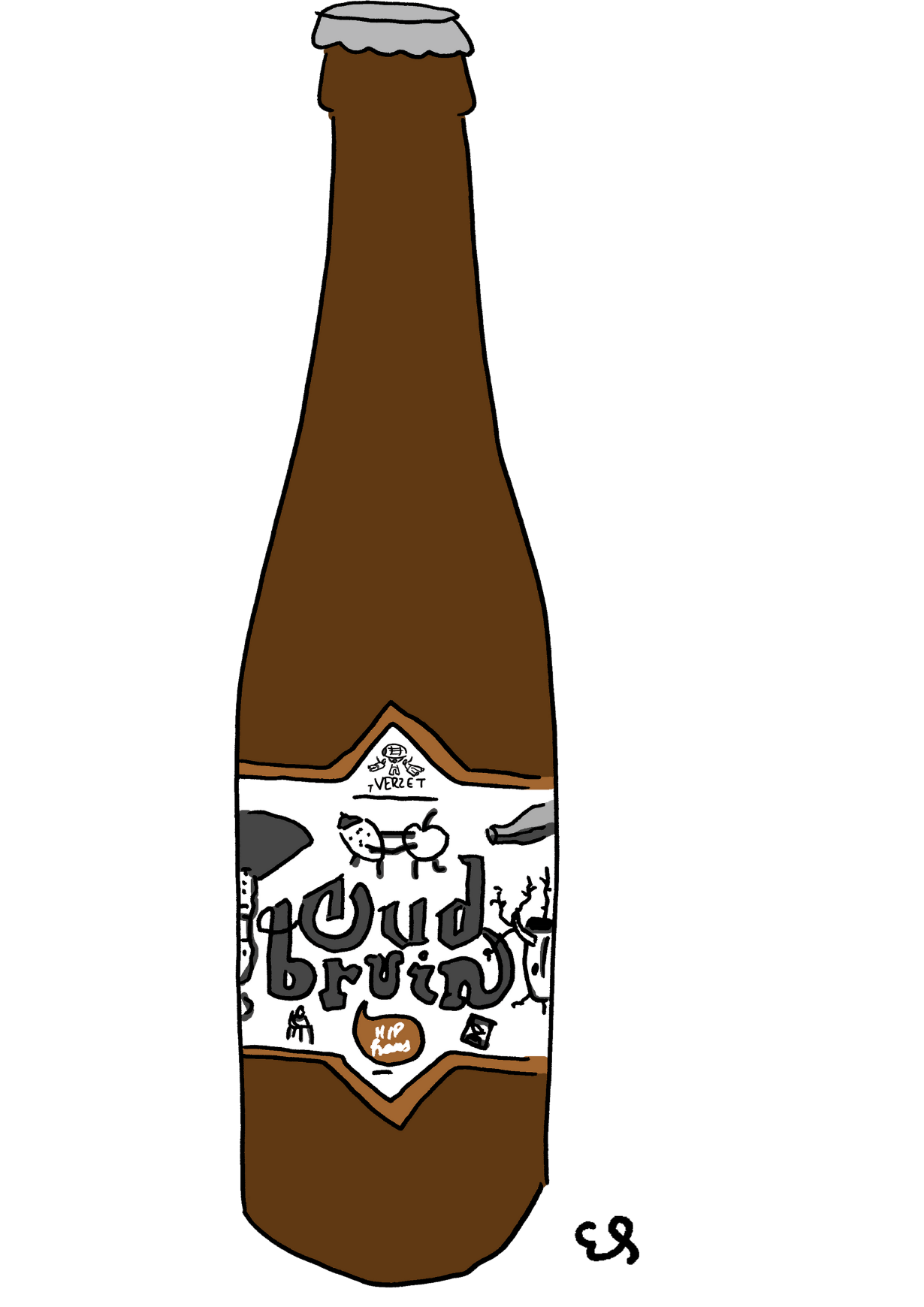
In the past decade, however, these beers have found a new champion. Three young men, two of whom met at brewing school in Ghent, started Brouwerij t’ Verzet with the express goal of supporting the style. They cut no corners in making the beer they call Oud Bruin. Batches are aged for a year in wine barrels and 18 months in foeders before blending. The original, “mother” batch was fermented spontaneously, and those microorganisms inoculate each barrel and vat. They have even brought back the old Flanders tradition of long boils—a minimum of three hours and, once or twice a year, a 16-hour odyssey.
“We are a fiery fan of [Oud Bruin],” co-founder and brewer Alex Lippens said. The stories of our fathers and uncles in the ‘80s and ‘90s, [where] next to each pilsner tap you had a Rodenbach tap—we can’t believe those stories, almost. The idea was to make it trendy again with young people; not like, ‘Ah, that’s for my grandad’.’”
—Jeff Alworth
Jeff Alworth is the author of several books, including “The Beer Bible“. He writes regularly at his blog, Beervana.
4. QUETSCHE TILQUIN À L’ANCIENNE (Gueuzerie Tilquin)
Plum Lambic (6.4% ABV)
Released: 2012
Even a form of brewing as old and traditional as Lambic has yielded to the mounting pressure of newness in beer, and Pierre Tilquin was a moderniser from the moment he opened his blendery doors.
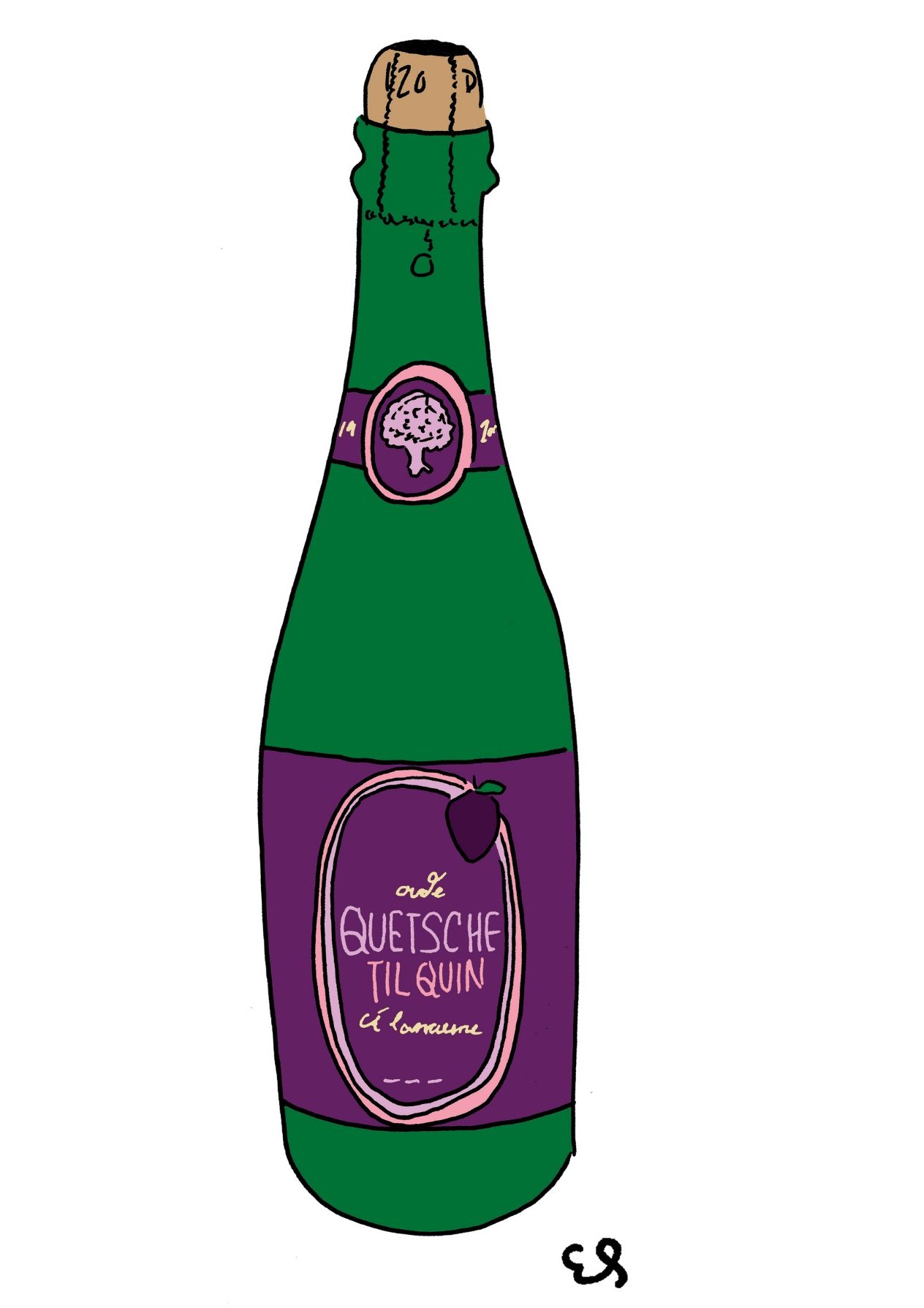
Tilquin worked and trained at Cantillon, which is perhaps where he learned to enjoy experimentation within the written and unwritten laws of Lambic culture. He was allowed entry to HORAL, the “High Council for Traditional Lambic Beers”, despite being a few kilometres from the official Payottenland and Senne Valley border; he kegged a low-strength Geuze despite tradition dictating it had to be bottle conditioned; he utilised inoculated wort from five breweries, an uncommon number in blending; and he made his name with Lambic conditioned over an unusual ingredient—plums.
Looking back, Quetsche doesn’t seem like a revolutionary act, and nor does the fact it uses wort from Cantillon, Girardin, Boon, Lindemans, and even Timmermans. But its release and success helped attract and educate new drinkers about the art and joy of blending, the nuance to be found in the smallest changes of process or quantity.
It also spelled the start of an unexpected phase of experimentation in Lambic as it found itself the darling of the “craft beer” movement—and suddenly subject to its demands for the new, fresh, unique, and exciting. The plums made way for green walnut (Oud Beersel), basil (Lindemans), Oolong tea (Cantillon), pumpkin (Timmermans) as well as a host of new, tiny Lambic blenders. Quetsche widened the Lambic palate—as well as the eyes of the Belgian Lambic purist.
—Jonny Garrett
Jonny Garrett is a London-based beer writer, author, and filmmaker. He writes regularly for Good Beer Hunting and is the founder of YouTube’s Craft Beer Channel. He was named the U.K. Beer Writer of the Year in 2019.
5. LA VERMONTOISE (Blaugies / Hill Farmstead)
Spelt Saison (6% ABV)
Released: 2012
Most collaboration beers are borne of the desperate need for hard-working brewers to charge a decent holiday against tax. Few are so inspired that they create a beer good enough to slide effortlessly into a tight regular range.
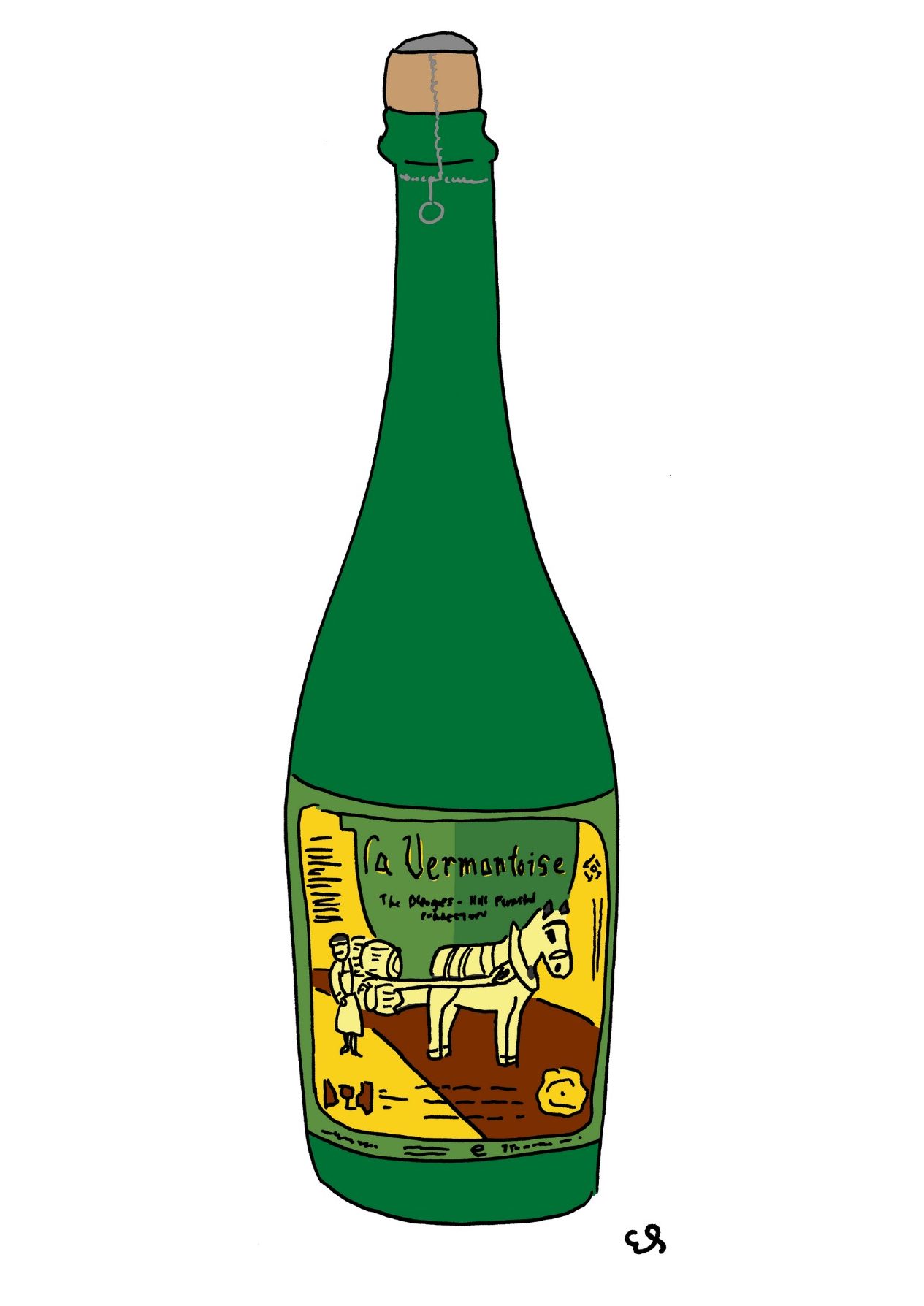
The Belgian brewing world lacks the volcanic drive of other nations’ craft brewing scenes, in part because the innovative ideas elsewhere are often based on what Belgium has already perfected. Sour beers? Fruit beers? Wild beers? Hazy beers? These offer nothing new.
Shaun Hill first visited Brasserie Blaugies, near Dour in Hainaut, while holidaying in Europe in 2007, three years before founding the Hill Farmstead brewery in Vermont (US). He remembered the originality and quality of the Carlier family’s idiosyncratic range that he pitched to brew there during a staff tour, mashing on US Election Day 2012.
La Vermontoise is the result of the best sort of fusion brewing. From Blaugies comes a typically off-centre base beer, a beautifully rustic, spelt saison, to which the Americans added Amarillo hops at the highest dose their hosts would tolerate.
The resulting 6% ABV Blonde Ale, with typical Belgian carbonation, billows intense interwoven aromas from floral hops and farmhouse ale yeast, bringing yet more breadth to the world’s most diverse brewing culture.
—Tim Webb
Tim Webb writes books about beer, including “Good Beer Guide Belgium” and “The World Atlas of Beer“.
6. DUVEL TRIPEL HOP CITRA (Duvel Moortgat)
Belgian IPA (8.5% ABV)
Released: 2012
First brewed as a “one-off” back in 2007, Duvel Tripel Hop was never intended to stick around, let alone leave such an impact. Initially billed as an opportunity for Duvel’s brewers to experiment, the first Tripel Hop featured American Amarillo hops alongside Duvel’s staples—Saaz and Styrian Golding.
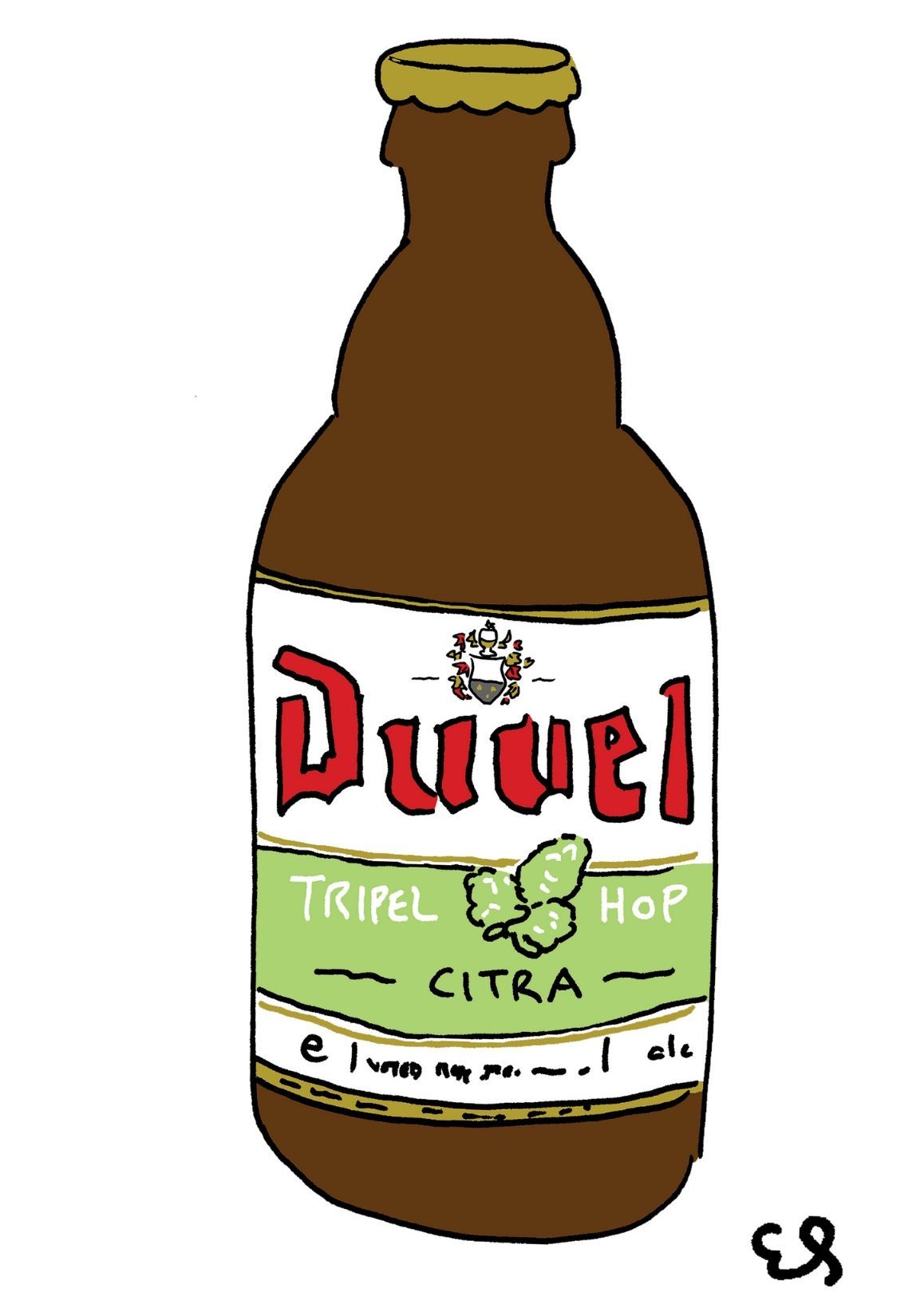
Reappearing in 2010, Duvel Tripel Hop featured a new hop each year, rotating through Amarillo, Citra, Sorachi Ace, Mosaic, Equinox and HBC-291 before being put to a consumer vote in 2016 to find the favourite. With 5,000-plus votes tallied, Tripel Hop Citra came out on top and became a permanent part of the Duvel line up, alongside the original.
Initially released in 2012, it was Tripel Hop Citra’s return in 2016 that really saw its impact. By this time, Citra was widely recognized as the citrusy American hop varietal behind many of the industry’s most popular IPAs, which inevitably gave this take on the Belgian classic a much wider appeal. And, leaning into its new likeness, it wasn’t long before the words “Belgian IPA” first appeared on the label, further setting this beer apart from its inspiration and signposting the way for other Belgian breweries to use New World hops with similar qualities.
With Duvel Tripel Hop Citra, what began as a spin-off became an icon in its own right. Better the Devil you know? Duvel Moortgat thought otherwise.
—Natalya Watson
Natalya Watson, aka Beer with Nat, is a beer educator, author and podcast host. She is the author of the book “Beer: Taste the Evolution in 50 Styles“. [Disclosure: She’s also the former Marketing Manager for Duvel UK.]
7. ZURE VAN TILDONK (Hof Ten Dormaal)
Sour / Wild Ale (6% ABV)
Released: 2013
In the early hours of January 6th, 2015, a blaze ripped through the family-owned farm that’s home to Hof Ten Dormaal brewery. The roof of the barn that housed the brewery since its establishment in 2009 was eradicated in the fire, along with the bottling line, conditioning rooms and much of the beer that Jef Janssens, his brother Dries, and father André, had worked hard to produce.
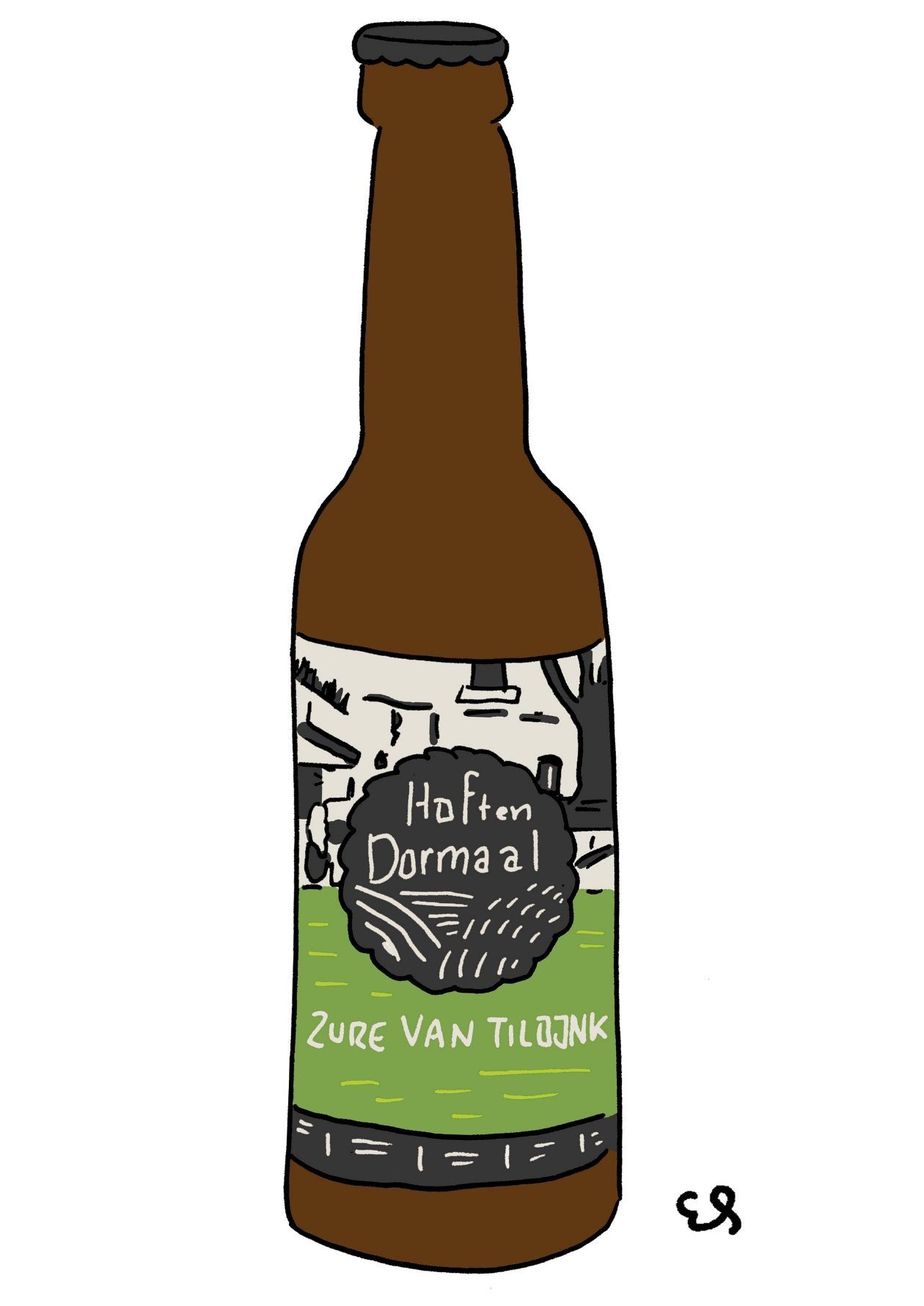
While many breweries would have faltered, Hof Ten Dormaal pressed on, even blending the surviving stock into a beer called “Inferno”. This fighting spirit is captured in every bottle and keg of their house wild ale, Zure van Tildonk—literally, “Sour from Tildonk”, in homage to their home, and the sense of place it lends to this beer.
Brewed in the traditional lambic style—a turbid mash that’s fermented in oak with yeasts indiginous to the farm—it’s bristling with the sharp acidity of lemon zest, with its bone dry finish conjuring images of freshly baled hay, or perhaps the petrichor of a Flanders field, newly soaked in the morning rain. This modern interpretation of traditional Belgian brewing ably demonstrates a style keen to keep moving onward, and not stuck in the mud of the past.
—Matthew Curtis
Matthew is an award winning writer and photographer and the co-founder of Pellicle Magazine. He contributes to publications including Ferment, BEER, and Good Beer Hunting and is currently working on a book called “Modern British Beer”, to be published by Camra Books in late 2021.
8. BABYLONE (Brussels Beer Project)
Belgian Bread IPA (7% ABV)
Released: 2015
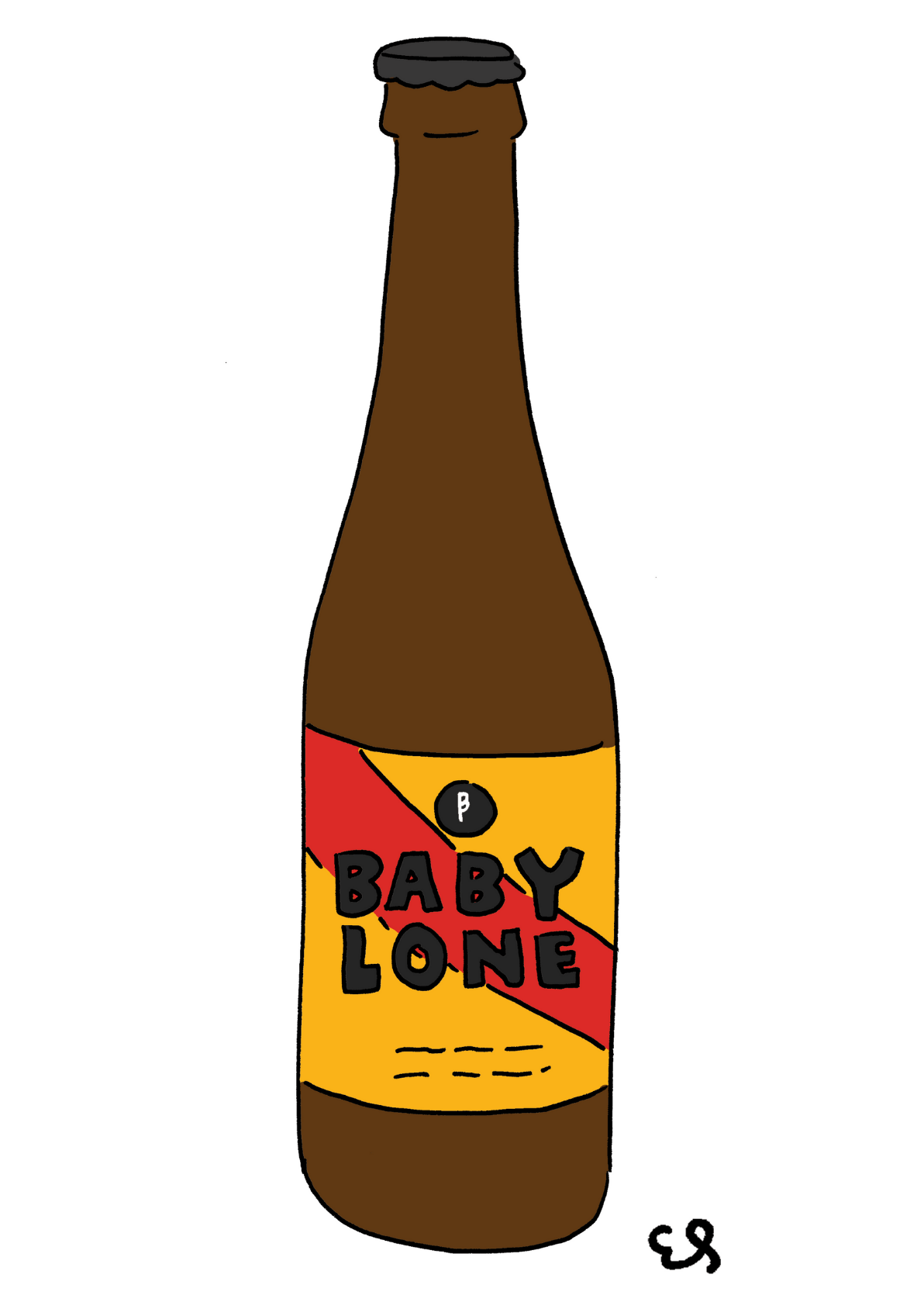
For many drinkers outside the country, Belgian beers have long enjoyed a reputation of grand traditions, stateliness and quality—while not exactly being considered paragons of hip urbanism, cool branding, and progressive social engagement. When it was released in 2015, Brussels Beer Project’s Babylone felt like it was the country’s first beer to embody those more-modern qualities. Made with unsold bread from the Delhaize supermarket chain, the anti-food-waste IPA made news headlines around the world, offering a new image of Belgian brewing in reports from Reuters, Deutsche Welle, and CNN, among others.
Beyond its au courant social engagement, Babylone also stood out for its contemporary label design: no chubby monks, no written-with-a-quill script, no MS-Paint monstrosities. In their place, a yellow field with a red sash boldly identified the beer in the brewery’s easily legible, extra-black font. Five years later, it still feels up to date.
Since its launch, Babylone has inspired other unsold-bread beers in the UK, France, the US, and elsewhere. On its own, it has saved more than 30 tons of potential food waste, while also illuminating the potential of modern anti-waste projects and circular economy.
—Evan Rail
Evan Rail is a travel, food, and drinks writer based in Prague. He is an editor at Good Beer Hunting and a writer for the New York Times. The author of several best-selling ebooks, his most recent is “The Meanings of Craft Beer“.
9. SPONTANBASIL (Lindemans / Mikkeller)
Basil Gueuze (6% ABV)
Released: 2016
Does it take a Dane to modernise Belgian beer?
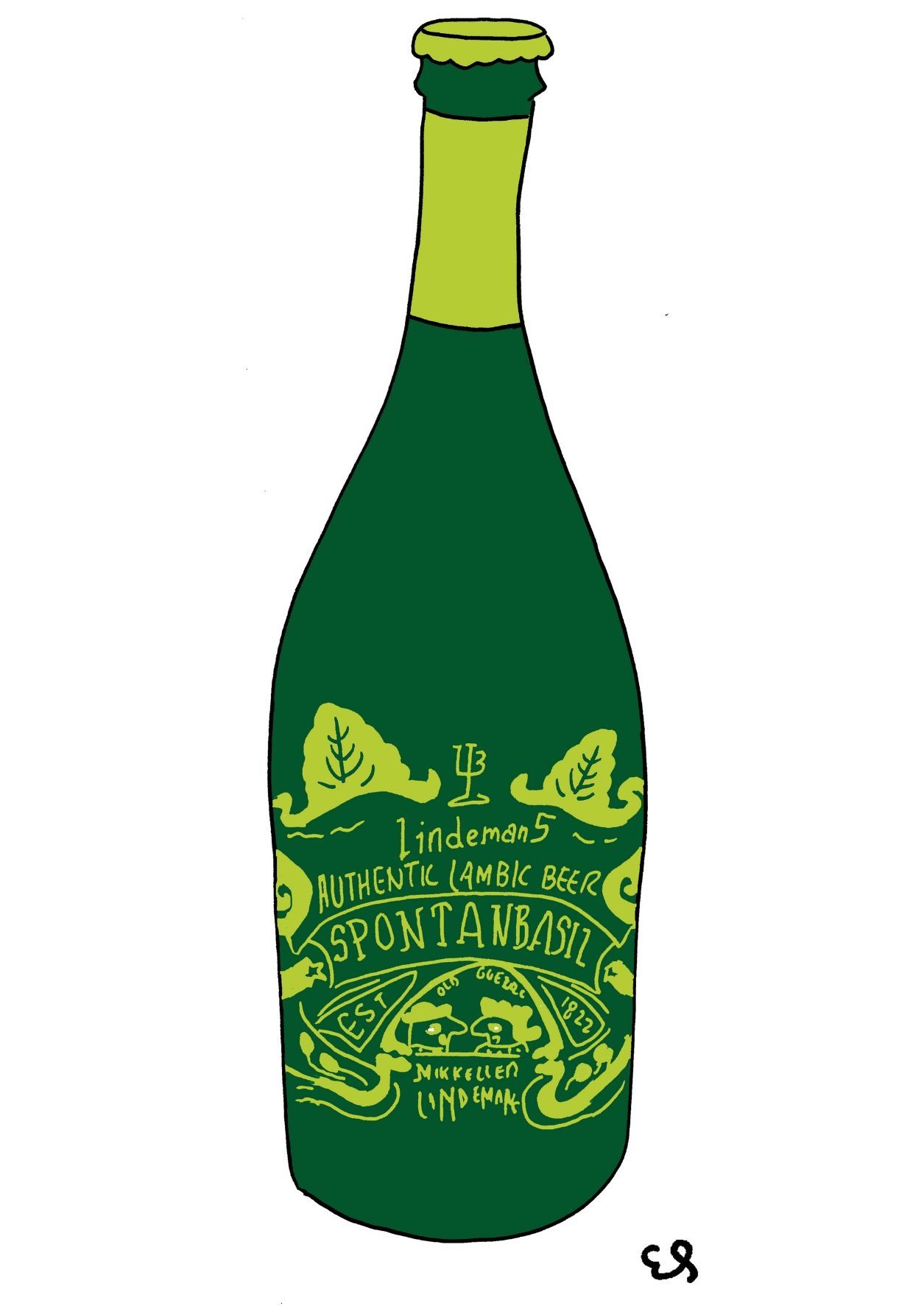
In the case of the landmark SpontanBasil—a basil-flavoured Oude Geuze produced at Brouwerij Lindemans since 2016—the answer is yes. The unlikely beer resulted from a collaboration with Mikkeller’s iconoclastic Mikkel Borg Bjergsø, who had expressed interest in partnering with a Belgian family brewery to produce a traditional blended, spontaneously fermented beer—but one featuring an out-of-the-ordinary flavour profile. After experimenting with various herbs and aromatics, the team was struck by how truly basil’s flavour carried through to the final beer—how vivid its sunny citric character, its delicate touch of anise, was in the glass.
Amidst Lindemans’ sea of fruit beers, and within a market awash in classical Lambics made with apricots and raspberries and cherries, the resulting beer was instantly distinctive, and for some, divisive. Its premise might have been a hard sell for drinkers more likely to associate the herb with pizza and caprese salad than beer. But fans soon outweighed skeptics. SpontanBasil has since racked up numerous awards, and while it was originally intended as a one-off collaboration, consistent demand has ensured it is now regularly produced.
Four years out, it’s clear that SpontanBasil has turned over a new, ahem, leaf for Belgian Lambic and Geuze production. Whether oregano beers, chervil beers, or tarragon beers follow remains to be seen.
—Claire Bullen
Claire Bullen is the Editor-in-Chief of Good Beer Hunting, author of “The Beer Lover’s Table,” and a freelance writer and editor.
10. BRUXELLENSIS (De La Senne)
Belgian Pale Ale (6.5% ABV)
Released: 2016
This beer is a love letter to brettanomyces and captures the fun that Brett can have when it gets its hands on some sugars. One week, this beer might taste like pineapple. A month later, it’ll switch its focus to hay and barn notes. That’s the best part of working with brett and time—a beer that’s ever-changing, evolving, and recreating itself.
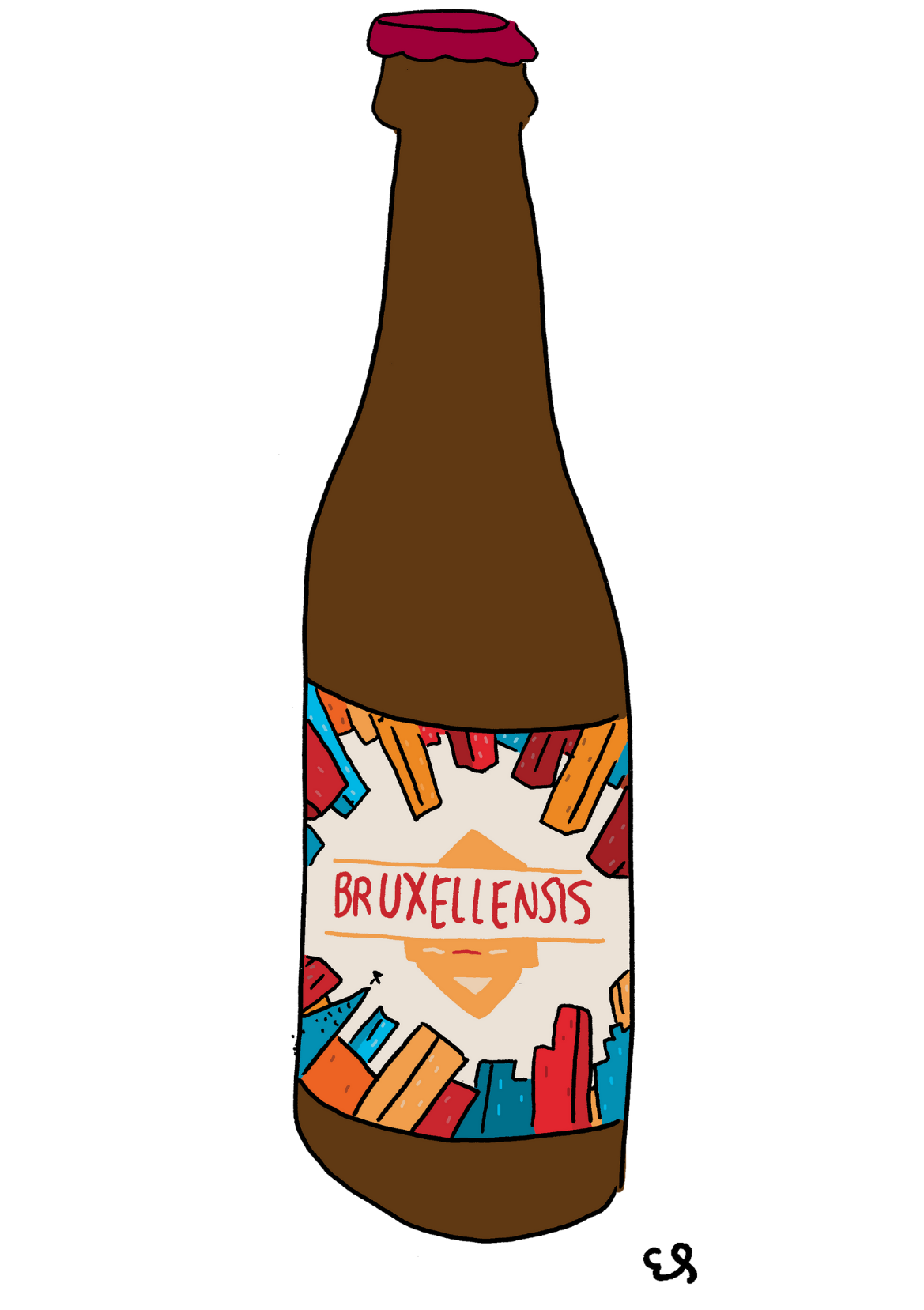
What I love about De La Senne is that they push the envelope and make Belgian beer feel very 21st century while keeping true to the essence of Belgian beer tradition. It’s what their owner Yvan de Baets strives for and achieves flawlessly.
This decade, Bruxellensis solidified De La Senne’s position as one of the most influential breweries in Belgium, and showed others how brett as a conditioning yeast could be used subtly to deliver a big impact.
Fun fact—this particular brett strain comes from a homebrewed beer made by a friend of the great Antoine Pierson, owner of the Malt Attacks bottle shop in Brussels.
—Em Sauter
Em Sauter is an award-winning cartoonist, Advanced Cicerone®, and International Beer Judge who delivers visual beer education on her site Pints and Panels.
11. CUVÉE ARMAND & GASTON (3 Fonteinen)
Oude Geuze (6% ABV)
Released: 2016
When it was first released on 10 June 2016, the Cuvée Armand & Gaston had all the characteristics of any 3 Fonteinen Oude Geuze: dry and moderately acidic with background hints of wood and brett which allow bright citrus, green apple, and white wine grape notes to rise to the top. But the beer marked several important milestones for 3 Fonteinen and for Lambic.
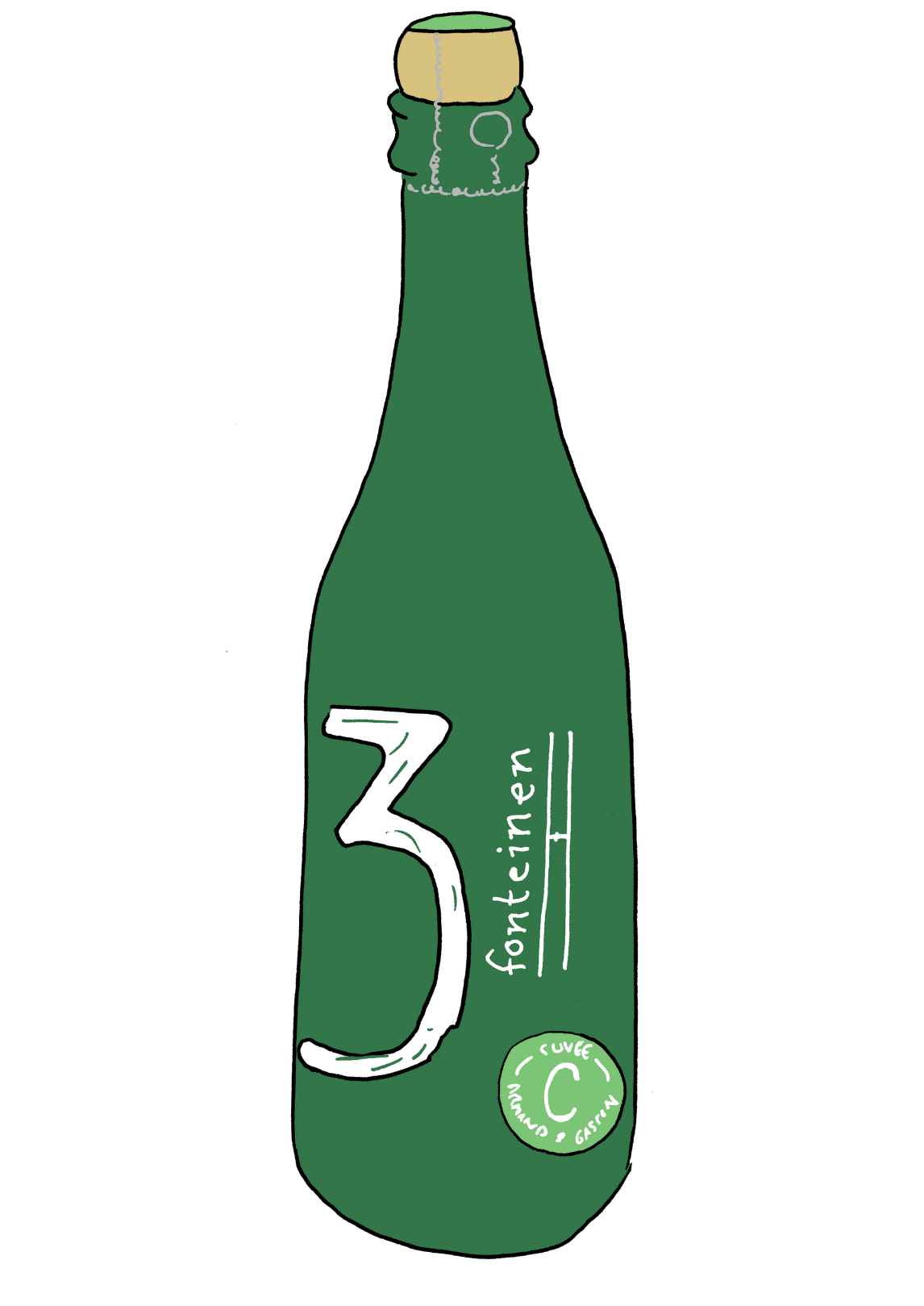
Cuvée Armand & Gaston was the first 3 Fonteinen beer containing a blend of Lambics brewed only at 3 Fonteinen. Their previous brewing escapades between 1998 and 2009 came to an abrupt end when a faulty thermostat caused 80,000 bottles to explode, putting 3 Fonteinen on the financial brink and forcing them to revert solely to blending. Back then, there was always some Boon or Lindemans wort in a 3 Fonteinen blend.
The release of Cuvée Armand & Gaston also coincided with a change of 3 Fonteinen’s ownership structure and an injection of capital investment. The reins of day-to-day production were passed to Michaël Blancquaert, and Werner Van Obberghen came in to manage business development. But the two new younger co-owners doubled down on legacy. “Armand” refers to the now-retired brewer and blender of 3 Fonteinen Armand Debelder, and “Gaston” is his father who bought the original blendery business in 1953. As if to emphasise this changing of the guard, the Cuvée Armand & Gaston blends were Michaël Blancquaert’s very first solo blends without Armand.
The final milestone marked by the beer was that it was launched alongside the opening of 3 Fonteinen’s new Lambik-o-droom—a new tap room, barrel store, and central base of operations into the future. They’ve since announced a second brewing hall will be added with a new logistics warehouse and a totally new tasting and events centre in an expansion costing 25 million euros.
Lambic has gone through periods of existential crisis, and it’s likely to always remain on the margins of the mainstream, but the Cuvée Armand & Gaston was a statement from 3 Fonteinen. Far from being a hype, they believe Lambic has a rich future ahead, one in which they’re willing to invest. Others now have a roadmap.
—Breandán Kearney
Breandán Kearney is a writer, photographer, and podcaster from Ireland, now based in Belgium. He is the Editor-in-Chief of Belgian Smaak.
12. BRETT ELLE (Lambiek Fabriek)
Oude Geuze (6% ABV)
Released: 2017
If the arrival of Gueuzerie Tilquin in 2011 suggested that the 21st century’s infatuation with Belgian Lambic was less a one night stand and more a long-term relationship, then the arrival of Lambiek Fabriek and their flagship Brett Elle Oude Geuze six years later confirmed that this once-moribund niche was once again in rude health. Where Pierre Tilquin launched an eponymous blendery, Jozef Van Bosstraeten, Jo Panneels, and Stijn Ecker went one further with Lambiek Fabriek and launched the first new Lambic brewery in the style’s Payottenland heartland.
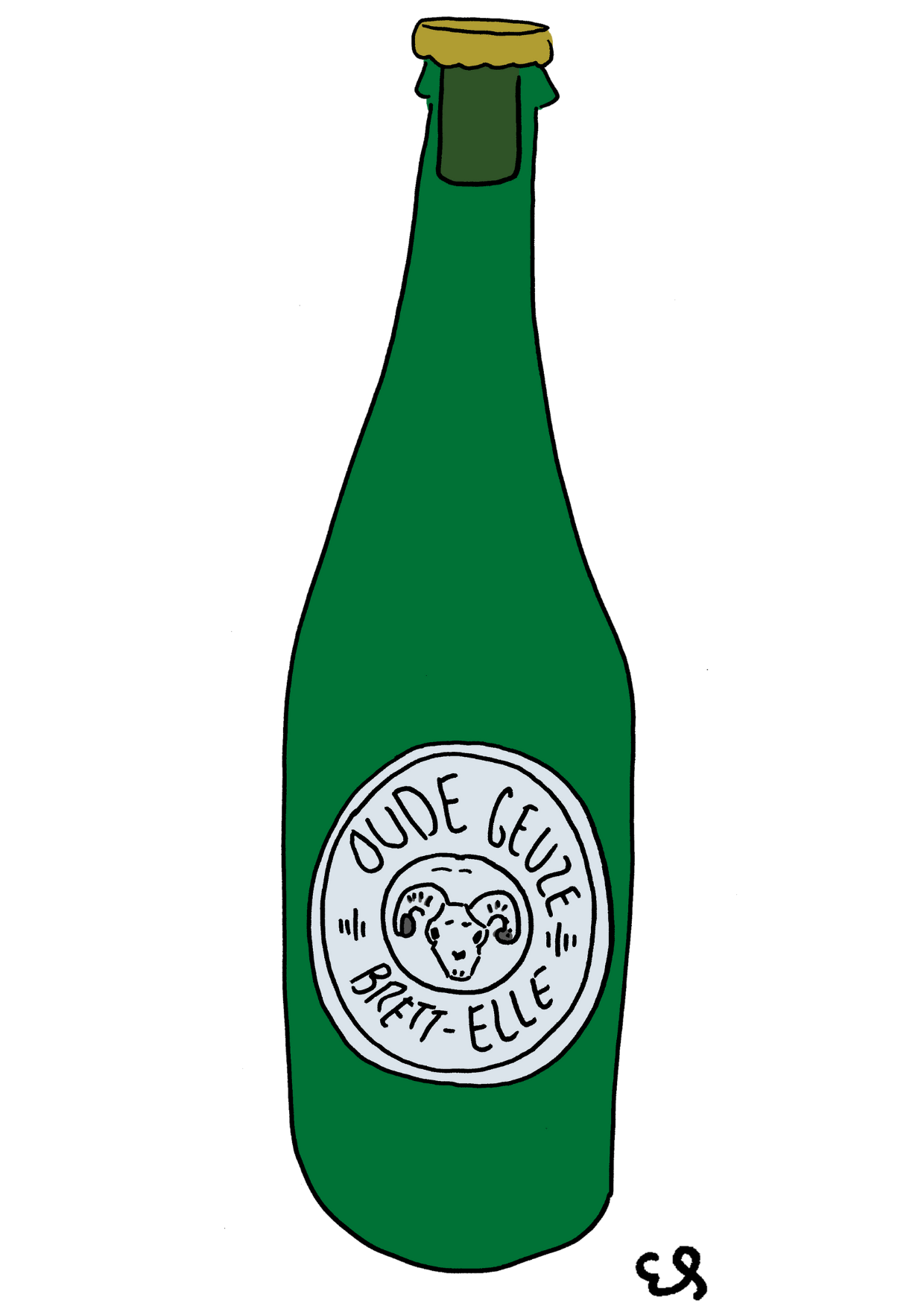
Brewing autodidacts who learned by doing, Lambiek Fabriek brewed their own wort, aged it on their own oak barrels stored on the site of the Belgoo brewery just outside Brussels, and blended it to make first Brett-Elle, then a slew of other fruit-infused iterations. The trio demonstrated their commitment to the old ways of Lambic brewing with the creation of Brett Elle in 2017. Here was an Oude Geuze made as it should—one, two, and three year old Lambic blended into a tart, effervescent beauty.
Popping an early example from 2018, Brett Elle opens up in the glass as a supremely approachable interpretation of the style—full of green apple, soft funkiness, steely minerality, an oaky dryness, and soft yet full body—right in the tradition of Frank Boon and Armand Debelder.
A new generation of Lambic breweries and blenderies have launched or are planned in the coming years, each of them following a new path laid out for them by Lambiek Fabriek and Tilquin. For these new players, capitalising on Geuze’s newfound global intrigue, Brett Elle is a leading light for how it can be done.
—Eoghan Walsh
Eoghan Walsh is the founder of the Brussels Beer City blog and host of the Brussels Beer City Podcast. His first book “Brussels Beer City: Stories from Brussels’ Brewing Past” was published in 2020.


